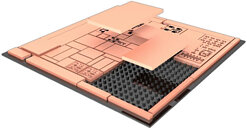
Intel Contributes AI Acceleration to PyTorch 2.0
In the release of Python 2.0, contributions from Intel using Intel Extension for PyTorch, oneAPI Deep Neural Network Library (oneDNN) and additional support for Intel CPUs enable developers to optimize inference and training performance for artificial intelligence (AI).
As part of the PyTorch 2.0 compilation stack, the TorchInductor CPU backend optimization by Intel Extension for PyTorch and PyTorch ATen CPU achieved up to 1.7 times faster FP32 inference performance when benchmarked with TorchBench, HuggingFace and timm. This update brings notable performance improvements to graph compilation over the PyTorch eager mode.
As part of the PyTorch 2.0 compilation stack, the TorchInductor CPU backend optimization by Intel Extension for PyTorch and PyTorch ATen CPU achieved up to 1.7 times faster FP32 inference performance when benchmarked with TorchBench, HuggingFace and timm. This update brings notable performance improvements to graph compilation over the PyTorch eager mode.


